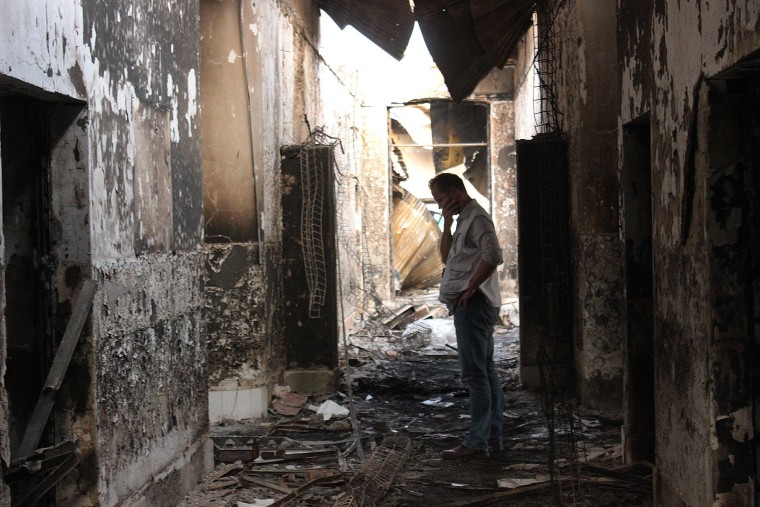There were so many examples of government lies and obfuscation about the true nature of the Afghanistan war in documents revealed by The Washington Post this week that it can be hard to keep track of them all. One that was largely overlooked is the Pentagon’s tendency to systematically undercount the number of civilians killed by U.S. forces, a long-standing process that has implications for how we prosecute this war and others.
Thankfully, the U.S. Congress is taking a major step to make the tallying of civilian casualties more accurate. On Wednesday, the House passed a massive defense bill that includes language mandating more accurate reporting. The Senate is set to soon follow suit, and President Donald Trump has said he’ll sign the mammoth spending package when it reaches his desk.
The Pentagon has long seemed to prefer to minimize reported civilian casualties and the bad press they generate.
This reform is a welcome and important development because the Pentagon has long seemed to prefer to minimize reported civilian casualties and the bad press they generate because the stakes are so high: Bad news can lead to the downsizing or cancellation of missions, and torpedo careers. Furthermore, battlefield adversaries can be counted on to weaponize downbeat reports as part of their political strategy and propaganda.
Yet feeding citizens and lawmakers a steady diet of deceptively sunny reports denies them the opportunity to evaluate the true cost of the war, and whether it is being fought in an ethical and effective manner. Which is why it’s so important that this practice has been exposed and that Congress is finally doing something about it.
The Pentagon’s tendency to massage casualty reports has endured despite greater levels of congressional scrutiny in recent years, leading to strict dictates in the new defense bill. The Pentagon reported to Congress earlier in May, for example, that it had credible evidence that in 2018 U.S. military operations had inadvertently killed “approximately 120 civilians” in Afghanistan, Iraq, Somalia and Syria. This might seem like a major improvement over the 500 civilian casualties reported in 2017. Unfortunately, nobody involved in tracking civilian casualties believes either year’s figures to be anywhere near the real death toll -- “shockingly low” is how a pair of experts described them.
In fact, the Pentagon’s total civilian casualty claims are a fraction of those reported by credible third parties such as international organizations Amnesty International, Human Rights Watch and the Red Cross that aren’t aligned with either side in a conflict.
In the case of Raqqa, the Pentagon in May reported “precision” bombing killed only 162 civilians during the four-month battle in 2017 to capture ISIS’ self-proclaimed capital in Syria. But a month earlier, a report by Amnesty International and the website Airwars counted more than 1,600 casualties in Raqqa in the same period, with “entire city blocks flattened.”
A couple of years earlier, a lengthy New York Times investigation on the ground in Iraq and Syria found that one out of every five U.S. airstrikes killed a civilian—not one out of every 157 as the Pentagon had claimed.
Part of the discrepancy stems from a Trump administration executive order that doesn’t include counting of civilian deaths outside areas of active hostilities. That means civilians killed by CIA drones in place where the U.S. isn’t officially in combat operations, like tribal areas of Pakistan say, simply won’t counted at all.
Predating the executive order, however, is a more fundamental issue: To deem an allegation credible, the Pentagon requires an exacting standard of proof, and verifying information in a war zone is difficult.But according to an Amnesty investigator, military investigators don’t usually visit the sites of the attack, even when they might have access to it. A Pentagon spokeswoman said the military relies on “strike video, mission reports and input from a robust intelligence network.”
Former Defense Department special counsel Ryan Goodman claims another systemic flaw is that the agency requires a high standard of credibility before even trying to investigate at all, effectively pre-screening away many incidents that could be verified with more effort.
Congress, therefore, is getting super specific in its reporting requirements. The bill commissions an independent study to assess how the Pentagon minimizes civilian casualties, requires more specific reporting of incidents -- including those that can’t be immediately verified -- and closes a loophole the Pentagon used to avoid reporting money paid to families of those accidentally killed by U.S. bombings. An official will oversee and standardize civilian casualty reporting, post findings publicly online and suggest policies to lower casualties in future operations, while the Pentagon must explain discrepancies between its casualty figures and those arrived at by credible third parties.
Meanwhile, the Pentagon is developing a policy to standardize how U.S. military global commands report civilian casualties, and work on procedures on how to avoid them—highlighting the remarkable fact that there has been no unified system in place before.
Reforms to the Pentagon’s dubious self-report cards could contribute to a more honest appraisal of the “forever wars” the U.S. has been fighting since 9/11. While being truthful about bad news has its consequences, so does maintaining a facade of positive reports about deteriorating situations for years upon years, as the Post’s recent investigation amply demonstrates.



